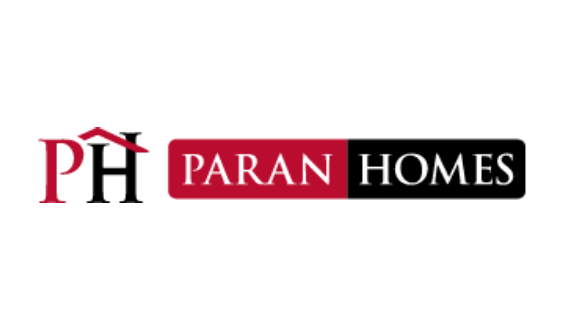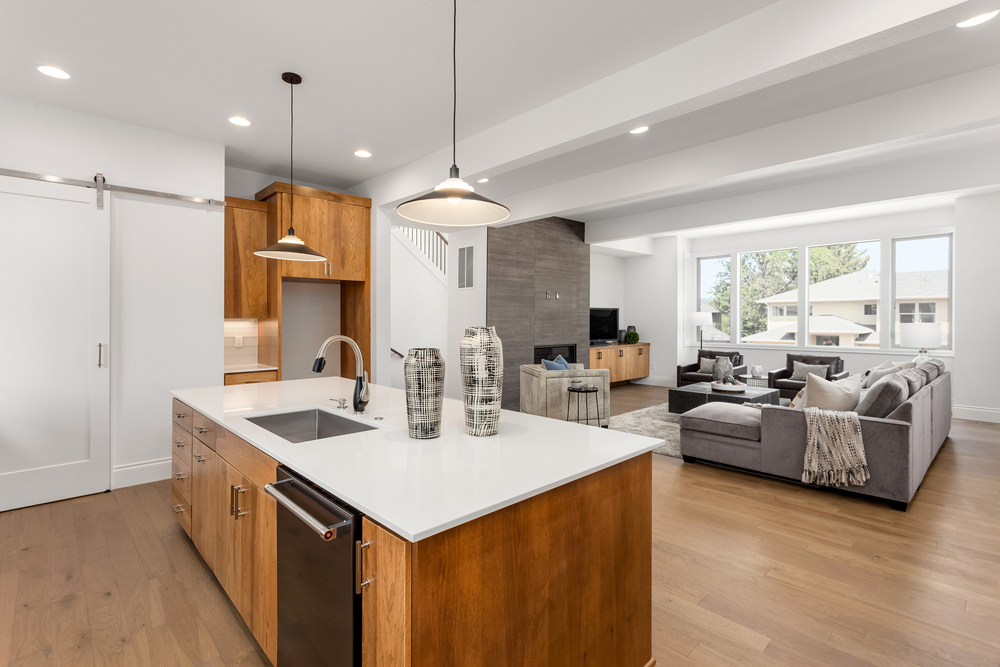At Paran Homes, we understand that a positive home buying experience is important to ensure you feel confident with the new investment you’re making. Whether you’re a first-time home buyer or a seasoned real estate holder, buying a house can be a daunting process. Each step brings excitement and a chance to explore new facets of information about the real estate market, but we’d be remiss to say the terms don’t sometimes baffle even the most savvy buyers. To ensure your home buying experience is as enjoyable and stress-free as possible, we’ve compiled a list of vocabulary terms that you need to know to stay informed.

Agent (Buyer & Listing)
In the real estate market, you will come in contact with several types of agents as you purchase your new home. It is imperative that you can distinguish between these individuals to alleviate any uncertainty.
Buyer’s Agent: The buyer’s agent represents the buyer or buyers in a real estate transaction. The buyer can be an individual, a couple, or a corporation. Although this person will conduct negotiations between the buyer and seller, the buyer’s agent’s goals are far-reaching and include helping guide the buyer through all stages of home buying, not just the price negotiations; market research, local knowledge for schools, traffic, economic development, resale values, property restrictions, covenants, etc. In many cases, they provide trusted resources for property inspections. They can provide the necessary information to bring an excellent offer to the table for a property their buyer wants to call home.
**Skipping contact with a Buyer’s Agent and going it alone is never recommended, especially since the seller usually covers their fees.
Listing Agent: The terms listing agent (or selling agent) are terms used interchangeably during the home buying process. The listing/selling agent represents the seller in a real estate transaction. This agent’s goal is to negotiate the contract for both the seller and the buyer with all pertinent information available about the transaction upfront. These details include flood zone projections, market shifts, finance issues or programs that fit the home in question, and flexibility for the seller if other conditions are met. The listing agent is responsible for presenting bids to their client, negotiating with other agents, and offering intelligible advice about which deal to accept.
**Additionally, this agent must be an expert on the property itself, not just the area. They must be able to answer questions about the mechanical conditions (HVAC, plumbing, electric), code questions, variance issues, and warranties (roof, mechanical, etc.)
Appraisal
An appraisal is the property’s estimated value on the market. An appraisal is required to help the mortgage lender confirm the loan amount needed to purchase the home. While most of us have heard of property appraisals, many are unaware of how they’re conducted or that even a new home has to have one if a mortgage is being used to purchase the house. Unlike a new car, which banks will base the new value on the sticker price and brand reputation alone, mortgages require at least three comparable sales within the last year to support the value of a home you’re buying. Sometimes new homes will underperform in a given area where no new homes have been built in years. Still, the appraisals usually note the differences between a brand new home vs. a 20-year-old home with its original roof, HVAC, and plumbing as a compensating factor.
**What happens if your appraisal comes short of the agreed purchase price? Often the appraiser can be permitted to extend their search to a neighboring market if there are better comparables for age, quality of construction, and styles of homes within an acceptable range. Sometimes the mortgage lender will require an additional down payment or additional mortgage insurance to close on the loan. Be sure to ask what options you have and what extenuating circumstances apply to the home you’re buying vs. the market in the rare event this happens.
Loan to Value
Loan to value, or LTV, is the percentage of the appraised value of the home that will have a mortgage lien against it. LTV determines things like how much your mortgage insurance premiums will be (this is different from hazard insurance and insures your loan against default) and can also affect your interest rate or qualifying loan program.
**For example, some loan programs will actually let you borrow up to 103% of the home’s appraised value, and others will not let you exceed 95% of the home’s appraised value.
Closing Costs
In addition to a down payment, there are fees and costs associated with buying a home that are collected throughout the process, with some traditionally collected “at closing.” While not all of these fees are collected on the day of your home closing, they’re still referred to and qualify as “closing costs” for purposes of tax deductions and mortgage transactions. In many property transactions, these fees are paid for by the buyer alone, the seller alone, or a mixed bag from both! Some are only “lender required,” meaning cash buyers won’t have to include them in their transactions. Depending on the negotiated contract and the type of financing you’ve been approved for, your closing costs may vary quite a bit.
It’s very important to get a “Good Faith Estimate” from your lender when you go to get pre-approved for a mortgage. This is a legal document and is required in a home mortgage transaction. It must be available to you well before closing, and you can request one as soon as you start the mortgage process. The Good Faith Estimate will disclose all the closing costs to you associated with your home purchase, right down to credit report fees, appraisal fees, and even the mortgage company’s commissions (known usually as an “origination fee”). The estimate will have an anticipated amount you will owe on the day of closing on your new home at the bottom. Some of these fees include legal fees, home inspections, insurance, property taxes, and much more. Buyers routinely pay between 2% to 5% of their total mortgage amount on closing costs; however, depending on the circumstance, home builders and lenders cover closing costs for buyers as a sales incentive or promotional offer.
**Read our blog for more information on the fees associated with the closing cost process!
Contingencies
A contingency is an agreement that must be met for a contract to be valid and legally binding. This allows the buyer to cancel a purchase agreement if certain conditions are not met by the seller. Common contract contingencies include:
Appraisal contingency: If the home’s appraised value is less than the sale price
Home sale contingency: If a buyer needs to sell their property before purchasing the new property.
Loan contingency: If a buyer is unable to secure a mortgage during a fixed period of time
Inspection contingency: If an item found during the inspection causes the home buyer to no longer want to purchase the property or if the home seller is unwilling to fix requested home repairs before closing.
Escrow
There are two types of escrow payments that homebuyers must consider.
Mortgage Escrow: Your monthly payments with your mortgage typically have an escrow component that includes property taxes and hazard insurance. In some cases, even HOA fees are paid through your mortgage company. These annual assessments of taxes and insurance are divided by 12 and then added to the principle & interest portion of your monthly payment. When the bills are due each year, the mortgage company will automatically pay them. This ensures their interest in your property so that they don’t lose their collateral for your loan in the event of a tax lien or emergency like a house fire. The amount of your monthly payment will remain consistent for one year but then will adjust each year to cover for changes in your property tax obligation and your insurance costs.
Closing Escrow: A fund a third party manages during a real estate sale. Most often, this is a title company or an attorney. While in Georgia, they’re rarely used, in other states, these escrow accounts may be required to hold payments or the entire purchase amount of a home to ensure that a seller has provided a clean, viable title. The funds are then disbursed to the correct party (typically the seller) after all escrow conditions are met.
Earnest Money
The term Earnest Money refers to funds sent from the buyer to the seller along with a formal offer letter. The money indicates that the seller is “earnest” and sincere in their monetary bid for the home. The money goes into the escrow account and is regarded as a deposit that becomes part of the purchase price. Earnest money may or may not be refundable. Terms will be covered in the agreement and should be discussed before sending this fee.

Home Inspections
A home inspection means a professional third party will assess the condition of the home and inspect it for any damages. This process gives the buyer peace of mind about the property they are purchasing or a notice of repairs that must be made, whether immediately or in the near future. The inspector looks at the home from the grade of the land, foundation, and all exterior components. They check different areas of the home for electrical, plumbing, and craftsmanship inconsistencies and will also note any signs of previous damage from fire, water, and insects.
Pre-Qualification vs. Pre-Approval Letter
When a buyer is ready to look for a home to purchase, they have the best chances of being taken seriously by sellers if they have obtained a Pre-Qualified letter from a mortgage lender. This letter indicates the amount of money that the bank is willing to lend you. This letter also proves to sellers and agents that the buyer has a good credit score, is financially stable enough to handle a mortgage, and is serious about buying the property. Additionally, it helps the buyer’s agent find their client a home that is within their price range.
Some buyers will also obtain an optional Pre-Approval letter. With this in hand, these buyers are considered the strongest buyer outside of a cash offer. Also, with pre-approval, a buyer only needs an appraisal for a property to move forward with closing on a home. There’s no waiting period for the seller while the buyer’s income and banking information is confirmed, as this buyer has already ticked all the checkboxes in their mortgage process except a home that the lender can approve.
Homeowner’s Association (HOA) & Property Owner’s Association (POA)
A homeowner’s association is a group of people that manage rules and regulations for residents in a neighborhood. This association will elect other homeowners as HOA board members who oversee various shared aspects of the community, such as amenities, landscape maintenance, and social events. Communities with an HOA often have an HOA fee paid yearly or monthly for the upkeep of these special services.
POAs operate similarly but have a broader power for a local area, not just one specific neighborhood, as well as some commercial property influence. Their board members may not be homeowners within your neighborhood. It’s important to ask a selling agent if the home you’re interested in is under covenants from an HOA or a POA, as the differences can be important.
Feel Confident at Closing with a Paran Home

Paran Homes is dedicated to educating our buyers about the real estate market, our active communities, and the home buyer experience. Contact an agent today for more information about our available homes and current promotions. We wish you a happy home buying experience with us!













 No one likes to think about spring cleaning but as a new
No one likes to think about spring cleaning but as a new 
 After that, you are ready to pull out the shorts and flip-flops. Maybe it’s time to search for
After that, you are ready to pull out the shorts and flip-flops. Maybe it’s time to search for 



